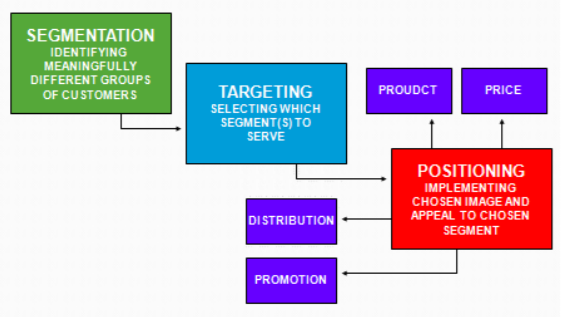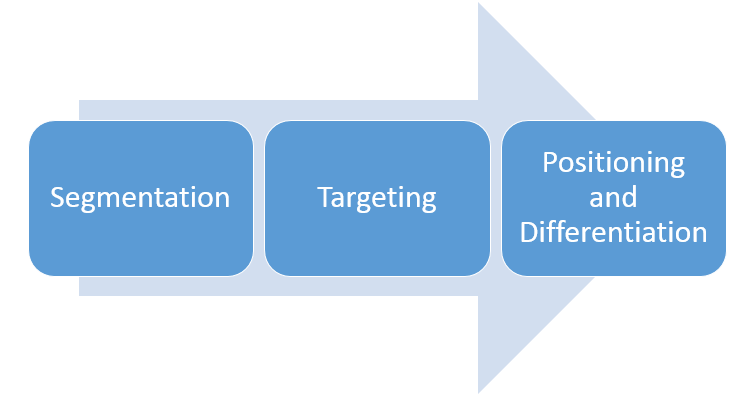Archives for October 2017
The Sales and Marketing Process in the Digital Age: How a salesperson can excel in the digital world

Table of Contents
Sales and marketing, even in the digital marketing age, must coexist and understand the role each other plays in your business. Whether your business is entirely online and uses eCommerce or your click-and-mortar sales team uses a mix of physical sales and online lead generation, the ubiquitous Sales Manager and Marketing Officer must work hand-in-hand.
In this article, we are going to discuss the challenges that a salesperson faces in the age of the digital website and transparent world of information. We will also touch on the need for marketing help from a strategic and tactical point of view. And finally, we will highlight the need for sales and marketing to understand the psychology of the buyer in a digital world.
The sales process in the digital marketing age has changed but the psychology of the buyer has not. The successful salesperson has upgraded their toolbox.

The role marketing and advertising plays has changed but the need to generate leads has not. The uniqueness of the digital age is the lead source. Did the prospective customer initiate contact from the physical sales process (walk into the facility, phoned in, met at a live event) and the online sales process (filled out a web form, engaged via social media or called after reviewing your website)?
Understanding Why People Buy
In this section, it is important to understand the role of online sales copy, the tone of the message during the ‘pitch', and the need for any business to understand the reasoning behind it all. Here is what every business needs to understand whether they sell through digital media or not:
- Almost every business that offers goods and services believes that it is the best at what they do and they have the best product for the price offered. Seriously, who does not believe that? All businesses believe they are better than their competitors. But that is part and parcel part of the problem. Too many make it about themselves. Just watch the promotions and such – look for the works me, I and everything that points to the product or business. News flash: Nobody cares about your offer until you prove you can solve a problem in a reasonable fashion.
- Customers love to buy but hate to be sold to. The customer buys to fulfill a need. They have a problem to solve. They have a desire to look good. IT is about them, not you, even if you have the one and only totally cool brand.
- Continuous returning customers are the ultimate of what all businesses seek even though they spend the majority of their money getting new ones. When your business has a great following in a community of advocates you hit nirvana. Most likely you have made it easy to buy from your business and the customer learned that your product or service does more than what your pitch said it would do.
What's the problem?
That bullet point list is common sense! Right?
The problem is that most marketers, during the sales process, incessantly talk about the product or service (first point).
Those marketers who are more well-intentioned and experienced hop on the community of coolness bandwagon (third point). Not good!
When in fact the only thing the customer cares about is their needs, their wants, their goals, their objectives and that their problem is being solved!
“Never confuse the reason people buy with the reason people stay.”
~ Dave Ramsey.
This is true with romantic relationships, people in debt, and the sales process.

Your sales and marketing agency must know the difference. Unfortunately, most do not.
Most marketing agencies became such through a strong background in IT (geeks, nerds, coders, developers) or a strong background in design (website builders, graphic artists, people that get into fonts, images, and colors). The best marketing agencies have all those folks in-house (not contracted agents) and are their leadership is rooted in understanding the complexities of a business's financials, heavily experienced in grassroots sales, and have led sizeable organizations from a C-level.
Your sales team must know the difference between the digital sales process and the physical sales process.
By now most businesses own a CRM and an automated marketing software platform of some kind. Most businesses have mapped the online lead generation process even if that is only with a basic contact webform or lead magnet.
However, very few SMB's have trained their sales team on the huge difference between the digital and physical sales process. In the physical sales process (live events, face-to-face, brick-and-mortar, phone calls) the salesperson has an edge. The salesperson controls the conversation and can evaluate the voice inflections and body language. In the digital sales process the salesperson needs to understand their role is now to answer product and service questions because more than likely the prospective customer has done extensive research and has made up their mind.
“The point is that consumer habits change – and often shift with advancements in technology. ”
Social Selling has changed the sales process landscape just like billboards did, yellow pages did and telemarketing did. Social selling has gained the attention of sales professionals looking to succeed.
There is no shortage of digital technologies to choose from that can help to improve the selling power of any business. However, plug and play is not a strategy! There needs to be a digital selling strategy in place. Entering data into a CRM that blasts emails is not a strategy, that is an illegal marketing tactic! Instead, a well-thought-out marketing strategy and an educated sales team, that is guided by the organization as a whole, will ensure the digital assets are aligned with sales activities that drive traffic and revenue.

How a salesperson can excel in the digital world.
Just as the top sales professionals and marketing agencies excelled 50 years ago is much like they do today. The top 20% outwork and outthink the rest! The bottom 80% are still reading a printed newspaper most of the morning just waiting for the leads to ask to buy. I call them order takers!
In the digital world, sales professionals need to learn and perfect certain skills to become a successful digital selling machine.
- Research. The view of the customer is critical as discussed previously in this article (Understanding Why People Buy). Research their problem, their needs and their wants! Do not assume or take for granted. 65% of companies who exceed lead and revenue goals have updated their buyer personas within the last six months. More importantly they have trained their sales professional what to do with that data!
- Constant content creation. Since most buyers today do their research on the product or service they need, finding facts and valuable information is critical to the buyers research. Therefore, having content that answers the questions the prospective buyer has are paramount and the need for such is non-stop. “55% of all buyers do their research via social media networks – so sharing content that speaks to a target audience is essential ” – Marketo.
- Social Media Tactics. There are many social channels to choose from. Being everywhere is often not practical. Knowing where your buyer hangs out is critical. Knowing each social channel functionality and capabilities is an absolute must.
- Knowing what the data says and does not say. A salesperson that can analyze behavioral data is a true weapon! This sales team member can be proactive and consumer friendly. Just as in the physical sales process where a relationship is valued, the digital customer has predictable behaviors and the true sale professional can pick up on that by analyzing data.
- Transparency and Trust. The consumer today wants to know it all before they sign on the bottom line. The sales professional that understands the digital media world and uses it their advantage, just as the smart shopper does, is the one who gains trust through transparency. Nurturing a customer online can go a long way to building trust and ensuring customers know as much about a seller and their company as possible. “94 percent of all consumers are more likely to be loyal to a brand when it commits to full transparency. … moms reported that they would pay more for a product with full transparency.” – Inc Magazine
- Critical Thinking. As discussed earlier in this article, consumers are looking for solutions to their problems, they do not care much about the business or the brand unless it satisfies their needs. The tools of the online trade exist for the true sales professional to monitor the online conversations based upon keywords and competitors. Tools such as Feedly and Buzz Sumo empower sales teams by keeping track of the such conversations. This is how the true sales professional monitors and can identify issues, pain points and recommendation requests.
In summary, very little has changed in three decades of selling. Just the tools and the form they exist. The top sales professional has adapted. The top organizations do not just establish a website and buy an automated marketing platform. They do just as they have done for decades, they teach, train, mentor, lead, and continuously adapt to understand their customers' needs, wants, desires, and methods of making decisions. Software and the associated technology are just tools!
How to Increase Your Facebook Page Engagement: Talk Less and Listen More

Table of Contents
Web site traffic is key to online conversions. Without traffic, an organization's website cannot sustain commerce or put valued content in front of the desired audience. Content can be well written and educating but without traffic it is ineffective. SEO traffic and Google AdWords are more and more competitive even in the most well-managed efforts. Social media, in most cases, has surpassed most tactics as a traffic-generating marketing tactic.
However, your Facebook engagement rates are down. Facebook engagement rates for brands and publishers is down over 22% since the beginning of 2017. Buzzsumo analyzed over 880 million Facebook posts and found the average engagement dropped from 340 to 264 over 2016.
In a previous article on the continued decline among Facebook engagement rates, we discussed the data behind this finding as well as the proof that this is not an isolated incident, the decline appears systemic.
If your business is reliant upon Facebook for customer service, site traffic, and communication with your prospective clients, then this decline is very concerning.
In this series, we are going to point out what you can do about declining engagement rates on your Facebook business page.

A history lesson: Marketers versus the consumer's attention.
For decades, marketers have flocked to the latest advertising vehicle, chasing the public to gain attention. In the 1950s that was the daily local newspaper, in the 1960's billboards on the new highway system, in the 1970's Time/Life magazines and the like, in the 1980's cable television and yellow pages, in the 1990's the beginning of the web site that leveled the playing field for small business. In 2000 it was search engine optimization. In 2010 is was email marketing and social media. The consumer has continually fought back by ignoring excessive promotions. Therefore, this continuing decline in Facebook post engagement rates is not surprising.
What has not changed throughout the decades is the reason the consumer fights back by vacating where they educate and entertain themselves. They leave when the self-promotion is greater than the desire to solve a problem or respect the needs of the public's desire for information that aids the derision making process.
Talk Less and Listen More on your Facebook Business Page.
Posting fewer times per day not only concentrates your message but also forces the company to deliver higher quality. Parse.ly found that 86% of website traffic comes from a combination of social media and search engines. Think about that. 86%! Does that not mean the public is looking for solutions for problems? Yes, we know the answer is obvious.
However, most marketers are under pressure to deliver traffic that converts to sales. That pressure tends to lend to being overly self-promotional and less focused on being informative, educational, or most importantly less conversational.
By posting only one to three times per day an organization will find it is easier to post quality and attend to the true conversation that social media users want. They want to be SOCIAL and they want answers to questions from a real human being without a hidden agenda. Say goodbye to posting five to six times per day! Now, that does not mean to stop posting every few hours if it works for you, and your engagement rate has held at a rate you enjoy. Finding great content takes time, and you don’t always have the time to do that. Just remember that great content is your audience's perspective, not yours.
Ask Questions and Add Staff
Over the past few years, our marketing agency has introduced and we have seen the addition of automatic Facebook postings tools and robotic answering services. Those marketing tactics still have a place.
People love to talk about themselves and have never enjoyed being talked down to like many marketers do when they are too self-serving. Questions are a great way to spark dialogue with fans. It is probably the easiest way and one of the best methods to get people to respond to your posts.
Get involved in the conversation with a real person!
However, in order to keep your audience from bailing on your Facebook page Viral Solutions highly recommends hiring people who know your brand to actually staff your Facebook page hourly, and to have that staff answer questions and participate in the conversation. That's right, human interaction in social media, not just hit and run posting helps keep your engagement and conversion rates high! Go figure.
Combating the Decline of Organic Facebook Reach.
Social media is the perfect vehicle to gain synergy from organic reach through referrals. When people enjoy engaging with your brand, they tend to tell their friends more so on Facebook than via any other tactic. This has a snowball effect on your lead generation funnel and lowers your cost of doing business. This means that when more people engage with your content, it adds context to your campaigns. The more organic reach that you have, the better your lead generation and conversion funnels will work.
Post less, listen more, and get personally involved in the conversation on your Facebook business page. The phone is ringing! Answer it.
The alternative to all of this is to outspend your competition by boosting your Facebook posts and through Facebook advertising.
Very few of us have an endless pile of money and even if we do there are many other places that money can be of service to benefit your company.
If your marketing team is struggling to maintain a respectable rate of engagement on your Facebook business page, you do have choices, increase your advertising spend in proportion to the increase in click rates or attack the problem by doing what has always worked by getting personal. Your audience, through every generation, has always one-on-one personal attention. Something many business owners think is too expensive. Is it?
Marketing Segmentation | The First Action in Any Organization’s Marketing Strategy

Table of Contents
What is marketing segmentation and why is it so crucial to marketing success? This blog post examines the primary methods of segmentation and the reasoning behind the methodology.
The common mistake made by most marketers is that most use marketing segmentation as an average of all data. This then leads the organization to communicate and market to the masses on average, when in fact there isn't an average customer, there are only groups of customers with commonalities.
Segmentation of customers into groups leads us to understand that differences exist in why people buy from an organization even when it is the same product line. When segmentation is properly applied to groups of customers within an organization, the organization begins to appreciate diversity and then can strategically begin to market to such groups.

All customers are not created equal. Many organizations experience a large percentage of revenue from a small percentage of their customers. Knowing such information allows all organizations to concentrate their attention and maximize their return.
Why do businesses and their marketing agencies segment?
In order to orient your organization correctly to the market, marketing segmentation is a must. More importantly, there exists a conflict in every organization between leadership that demands revenue, wants to sell anything to anyone, maximize profit, and the marketing agency that recognizes that the consumer buys based upon their relationship, connection, or emotional need. This balance between profit and the variances within customer groups makes marketing segmentation a daily function of successful organizations.
Segmentation of the market is the first action in any organization's marketing strategy. Marketing segmentation is then followed by targeting and then positioning the brand into a niche.
“Psychographic segmentation has been out of favour for a while despite its obvious usefulness, but combining it with behavioural and addressable data creates a potent mix that could make targeting supremely effective.”
Is marketing about the product or the customer need?
Proper market orientation compels the company to focus on the needs of the customer rather than from the perspective of the products and services they want to sell to the consumer. Marketing to the customer's need is not just about sending information that explains the product or service. It is also much more sophisticated than just designing an avatar. The marketing avatar is a great start, but that customer does not actually exist, it is a hypothetical customer that needs to be killed in organizations. True marketing involves market research and interviewing actual customers.
Hypothetical customers, or marketing avatars, are wonderful to build plans around and they make the business feel good about itself. The avatar always wants what you offer, they never complain, they do exactly what you want and they never surprise you.
Organizations that first design an avatar and then correctly focus on the real customer that they attract are those who learn how to do true research and gain an awakening into the needs of their true customer. However, this is when the organization discovers the complexity of their true customer and begins to believe in the fallacy that research and customer interviews are not worth their time. When in fact the complexity always existed and was always there and will never leave unless it is methodically brought into the fold of the operation in the form of marketing segmentation, marketing research, and marketing orientation. Research reveals complexity and research reveals the customer needs from their perspective.

How do we manage the complexity of who our customer is?
We do so through segmentation. Segmentation allows the organization to manage and move the market. A great example is the automotive industry. Almost all automotive manufacturers have brand variances of the same vehicle that appeals to different income brackets, varying style differences for certain gender tastes and features that appeal to those with unique behaviors in how they use their vehicle.
What are the various types of marketing segmentation?
- Demographic: “Demographic segmentation is market segmentation according to age, race, religion, gender, family size, ethnicity, income, and education. Demographics can be segmented into several markets to help an organization target its consumers more accurately.” – Study.com
- Firmographic: “Firmographics are descriptive attributes of firms that can be used to aggregate individual firms into meaningful market segments. They describe businesses, nonprofits, and governmental entities. Essentially, firmographics are to businesses and organizations what demographics are to people.” – The Wiglaf Journal
- Psychographic: “Psychographic segmentation divides consumers into sub-groups based on shared characteristics. As the adjective ‘psychographic' suggests, those characteristics relate to psychological influences, including subconscious or conscious beliefs, motivations, and priorities. Very broadly, psychographic segmentation applies behavioral and social sciences to marketing research. In other words, psychographic segmentation focuses on what makes individual consumers tick—their attitudes, values, personalities, lifestyles, and communication preferences.” – Merriam Webster
- Behavioral: “Behavioural segmentation is a marketing strategy based on actual consumer buying behaviour. It divides the market into groups of customers according to their knowledge of, attitude towards, use of or response to a product.” – Wordstream

“Market segmentation consists of taking the total heterogeneous market for a product and dividing it into served submarkets or segments each of which tends to be homogeneous in all significant aspects”.
– William A. Stanton
By segmenting our market, our customers, and our offerings we begin to develop sections of customers that have commonalities. This combination of demographics, Firmographics, psychographic and behavioral segmentation enables the organization to truly understand the needs of its customers and why they need certain products or services. This is an art! By cutting our customers into segmented groups we find similarities and we begin to learn how to communicate with those groups. Marketing segmentation is the key to marketing strategy. Marketing strategy is impossible without correctly segmenting your customers.
Market segmentation is about the market and is not about the firm. Market segmentation is also not to be confused with target marketing. Target marketing is the tactic employed once market segmentation is done correctly. Target marketing will fail or at least underperform if segmentation is completed incorrectly. Segment then Target and then Differentiate!

How do you apply marketing segmentation to target marketing?
First, let's make sure we have an understanding of the various segmented groups derived from the segmentation methods.
You know you have your market properly segmented when you have groups of customers that fall into specific clusters within all four of the types of marketing segmentation methods. Example: 45 -55 year-old women living in northern Virginia [Demographic], they work for the government [Firmographic], they have heavy interests in everything digital or online [Psychographic] and they tend to buy with a credit card at retail stores after shopping online [Behavioral].
In order to put this research and the subsequent segmented customers into an actionable target marketing plan, an organization must identify the steps each segment takes to engage with an organization's products or services. Here is what you need:
- A list of all the variables.
- A way to measure or rate each variable or meaningful action.
- Method to gather cumulative ratings of actions and behavior.
- A name for each segmented customer group.
- An educated estimate of the number of prospective customers in each group.
- A refined value attributed to each segmented group in terms of revenue.
- Estimated current market share and goal for your market share X years from now.
Once the organization has gathered all this data it now needs to discuss and understand that each segmented audience group has influence over the other and each group has some degree of overflow into another. Understanding this relationship is important to your overall target marketing. Now that the organization understands the dynamics of the segmented groups and how they relate and influence each other it can better engage with them and evaluate the true size of the market they wish to gain customers from.
How do you know if your marketing segmentation is good enough and accurate?
The organization's marketing department and leadership needs to honestly answer some questions. Did we include the entire market with every type of potential customer (remember we are not targeting yet)? Do I have customers in more than one segmented group? If so go back to square one because the segmentation will fail. Are the segmented groups well defined as per definition? Are the names of the segmented groups based upon behavior? This is important because customer service teams and salespeople will remember names tied to behavior. Are the segmented groups sized and valued correctly? Lastly and most importantly, when the marketing team shows the sales team the marketing segmentation groups and names, what is their reaction? Can your sales team pull names off the top of their head that identifies with each group?
Ultimately marketing segmentation gives the organization a true vision of the market as a whole. Segments should speak to you as to who to target so an organization can now make quality decisions when they expend assets to acquire and hang on to customers. Remember this is not about the organization, this is about your customer. If you do this correctly, and your competitor is as smart as your organization – their targeting will look much like yours. This then is when you must differentiate yourself.
Segment, then Target, and then Differentiate!
How to Increase Your Facebook Page Engagement

You may have noticed that the engagement rate on your branded Facebook page is down. The good news is that your brand is not unique in that statistic. The bad news is that the consumer is getting tired of what brands choose to use Facebook for. This nothing new, in the eyes of the consumer, brands tend to overrun new marketing channels and viewership has a way of letting brands know that their space is being invaded.
Facebook engagement rates for brands and publishers is down over 22% since the beginning of 2017. Buzzsumo analyzed over 880 million Facebook posts and found the average engagement dropped from 340 to 264 over 2016.
These statistics are troubling! If you are in charge of your brands social media presence and rely on it for site traffic, consumer advocacy and overall brand awareness then you know how critical Facebook is as a marketing tactic.
In this series we are going to discuss the why behind the what. We will discuss the data behind this study, the possible reasons for the drop that relate to your brand and how you use Facebook as well as the ways your brand should approach its use of Facebook as a marketing tactic. Remember, marketing tools and tactics is constantly moving with the changes to technology and more importantly with the consumer's expectations and needs.
Could the data be misleading?
Data can be deceiving and that could be the case here. While many brands reduced their overall advertising spend from 2016, we do know that brands spent more money on Facebook promotional advertising and this should have increased engagement. However, Facebook also has increased the amount of money it takes to obtain the same reach and more and more large companies are using Facebook with paid advertising and boosted Facebook posts. This algorithmic change means that the organic reach of Facebook declined dramatically which in-turn has a negative impact on overall engagement rates.
Marketing Land reported that “Facebook organic reach is down 52% for publishers’ Pages this year .While on average publishers' organic reach on Facebook has fallen by 52% in 2016, video and a lower reliance on Facebook has neutralized the pain for some.”
The Chicago Tribune reported, “Facebook’s algorithm isn’t surfacing one-third of our posts. And it’s getting worse”.
AdWeek reported, “Facebook reported advertising revenue of $9.16 billion in the second quarter of 2017, a 47 percent increase over the same quarter last year. Earnings per share for the second quarter totaled $1.32, up from 78 cents during the same period last year”.
Are there other factors behind the data?
Is the consumer being inundated with content on a channel they view as personal use? Has competition increased to the point that the small business is being drowned out? Could the data be skewed by the fact that 2016 saw a huge increase in political use of social media and the engagement rate dropped right after the Presidential Inauguration?
What do you do with this information if you are reliant upon Facebook engagement to fuel your business?
Over the coming weeks we will provide you with what we believe are the reasons behind the change in engagement rates and suggest tactical moves you must make in order to maintain a vital link to the success of your online business. It is easy to start a Facebook page but it is very difficult to grow one with the right audience and have that page deliver results. Join us as we discuss and suggest “How to Increase Your Facebook Page Engagement”.

